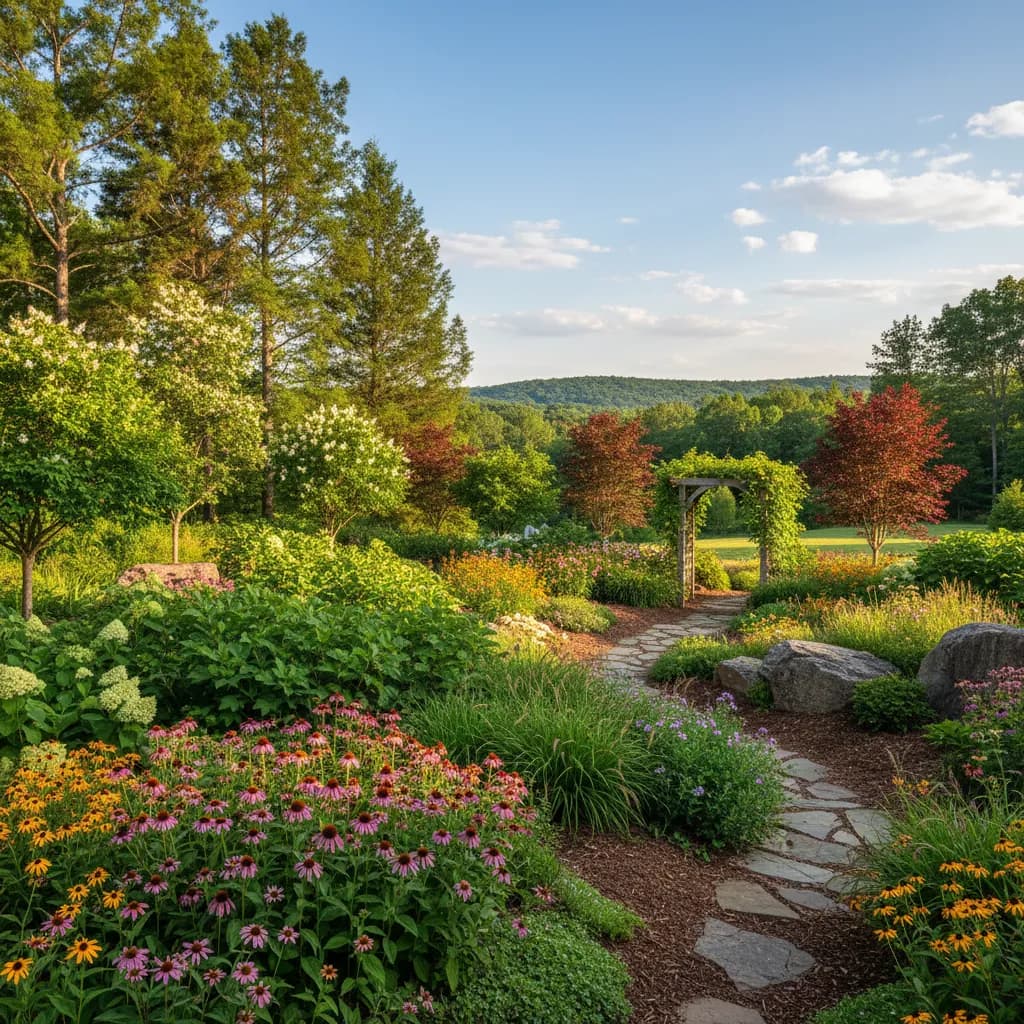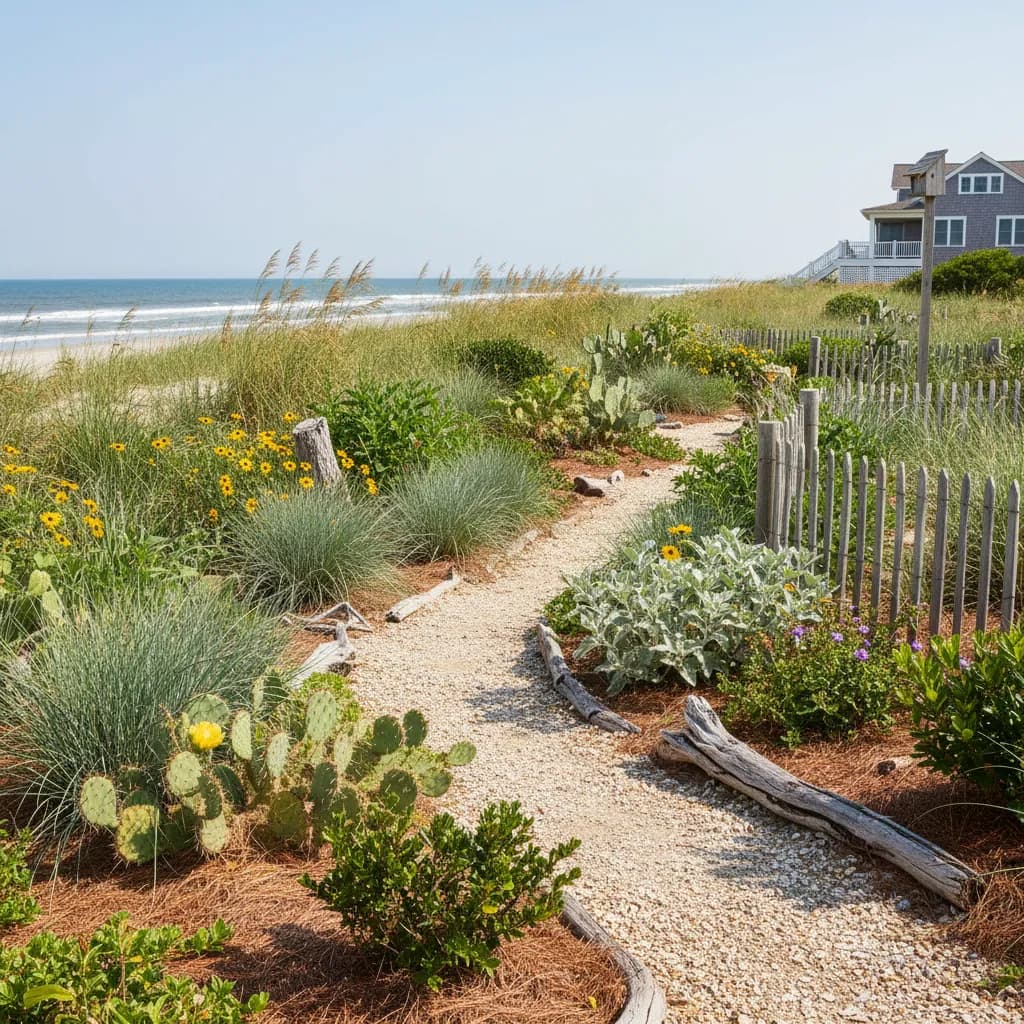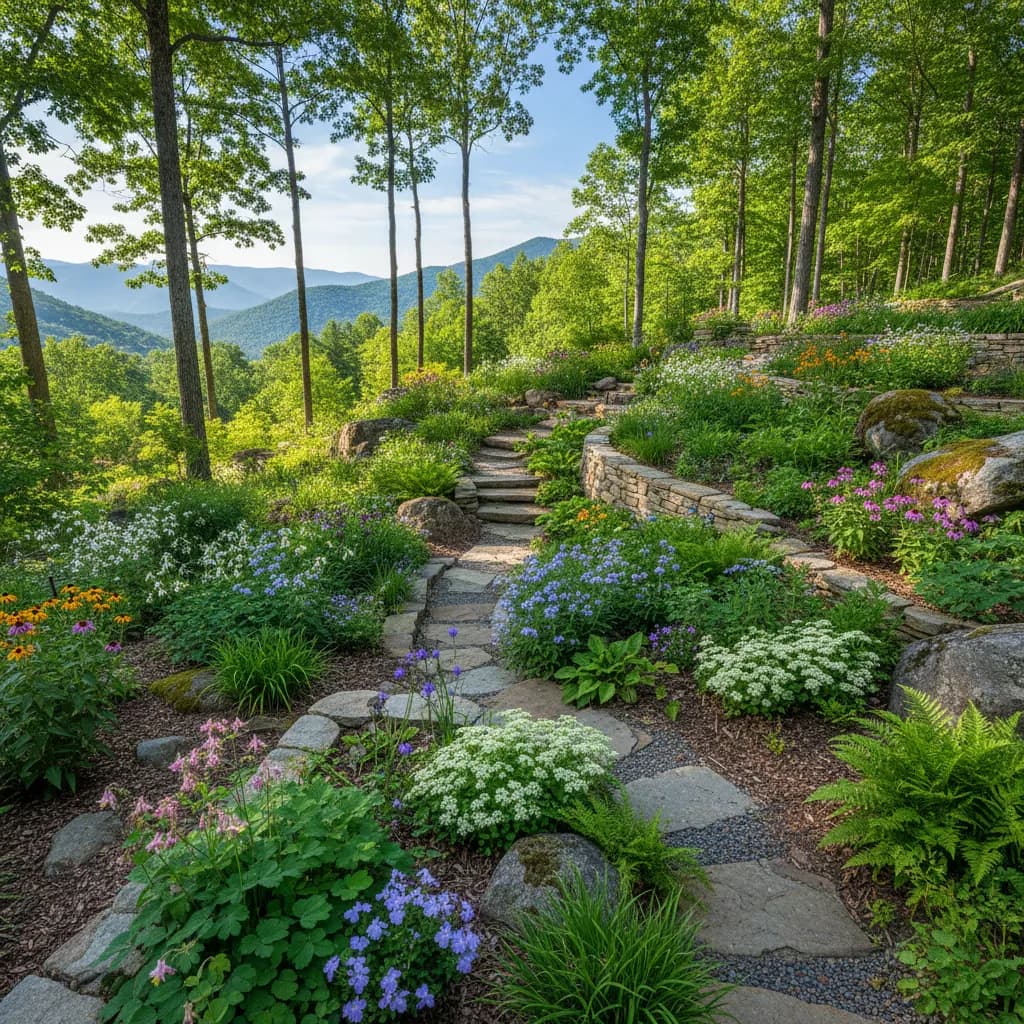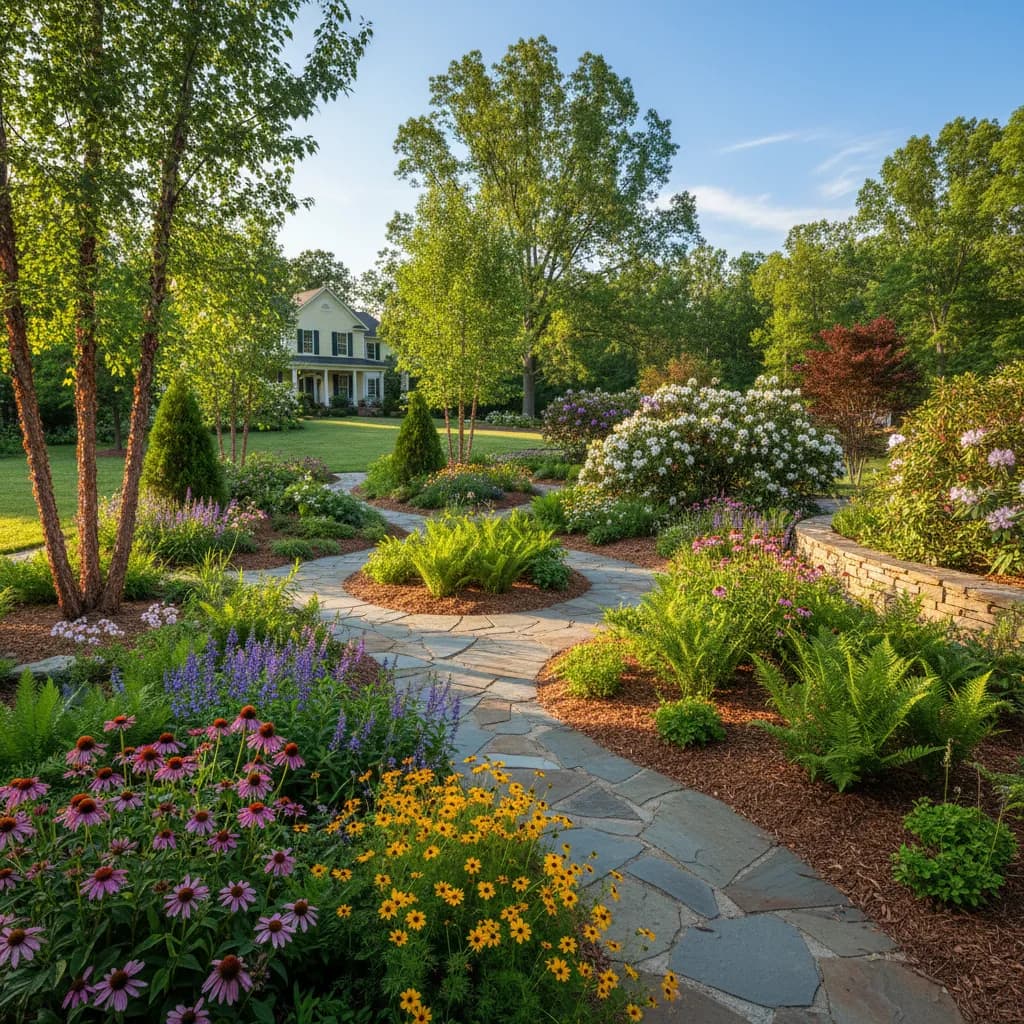North Carolina Climate Snapshot
Understanding your local climate is key to creating a thriving, low-maintenance garden
Hardiness Zones
6a, 6b, 7a, 7b, 8a, 8b
Annual Rainfall
40-55 inches annually (higher in mountains)
Frost Window
November-April (varies by region)
Water Notes
Generally adequate rainfall; coastal areas face salt exposure
Popular Landscaping Styles
Discover design styles perfectly suited to North Carolina's unique climate and landscape

Mixed native trees and shrubs with perennial borders
Key Features:
- •Dogwood and redbud trees
- •Native azalea and rhododendron
- •Perennial borders
- •Mulched woodland paths

Salt-tolerant plants for beachside and barrier island properties
Key Features:
- •Salt-resistant natives
- •Dune grasses
- •Wind-resistant shrubs
- •Sandy soil amendments

Cool-season plants and Appalachian natives
Key Features:
- •Spring wildflower displays
- •Native rhododendron
- •Mountain laurel thickets
- •Stone retaining walls

Native plant layers supporting birds, butterflies, and pollinators
Key Features:
- •Host plants for butterfly larvae
- •Berry-producing shrubs for birds
- •Water sources
- •Diverse native plant palette
Recommended Plant Palettes
Native and adapted plants that thrive in North Carolina's climate

Flowering Dogwood
Cornus florida
State flower; white or pink spring blooms

Carolina Jessamine
Gelsemium sempervirens
State flower; fragrant yellow trumpet flowers

Sweetspire
Itea virginica
Fragrant white flower spikes; red fall color

Foamflower
Tiarella cordifolia
White spring flowers; excellent groundcover

Milkweed
Asclepias tuberosa
Orange butterfly weed; monarch host plant

Joe-Pye Weed
Eutrochium fistulosum
Tall mauve flowers attract many butterflies

Purple Coneflower
Echinacea purpurea
Pink-purple daisy flowers loved by bees

Black-Eyed Susan
Rudbeckia hirta
Golden yellow flowers; easy and reliable

Oakleaf Hydrangea
Hydrangea quercifolia
White flowers; oak-like leaves turn burgundy

Christmas Fern
Polystichum acrostichoides
Evergreen native fern for dry shade

Hostas
Hosta spp.
Bold foliage in many colors and sizes

Coral Bells
Heuchera americana
Colorful foliage; delicate flower stalks
Seasonal Garden Checklist
Your year-round guide to maintaining a beautiful North Carolina garden
Plant spring bulbs and cool-season vegetables
Mulch beds and protect tender plants
Prune dormant trees and shrubs
Start seeds indoors for transplanting
Divide perennials and apply compost
Deadhead spent blooms and monitor pests
Frequently Asked Questions
Get answers to common questions about landscaping in North Carolina
Ready to Design Your North Carolina Garden?
Upload a photo of your yard and get AI-powered garden designs tailored to North Carolina's climate with native and adapted plants.
Design Your Garden